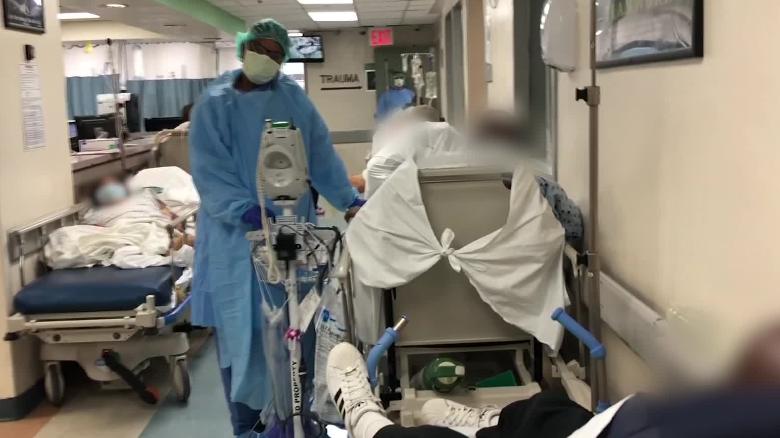Kate Hunter, Reporter
@khuntercourant
As the impact of the COVID-19 outbreak continues to spread nationwide, the demand for ventilators soars. However, the reasoning for the recent lack of this necessary medical equipment dates back to 2007.
The background:
Thirteen years ago, ventilators were bulky and expensive, but the U.S. Public Health Officials wanted to prepare for a potential flu pandemic or other crisis by mass producing this equipment. Unfortunately, this attempt failed when the privately-owned company tasked with manufacturing the ventilators was bought by a multi-billionaire.
In 2014, the government tried again. Although this attempt was successful, the ventilators were only approved last year. Therefore, the equipment has yet to be distributed.
Doctor Thomas R. Frieden ran the Centers for Disease Control and Prevention from 2009-2017. “We definitely saw the problem. We innovated to try and get a solution. We made really good progress, but it doesn’t appear to have resulted in the volume that we needed,” he said according to this NY Times article.
In addition, five years ago, New York City auctioned off hundreds of ventilators because “the health department ‘couldn’t afford to maintain them,’” The Hill reported in this article.
The problem:
New York Governor, Andrew Cuomo, would agree with Frieden’s statement. As New York has become the epicenter of the COVID-19 outbreak in the United States, he understands the severity of lack of ventilators in the midst of the pandemic.

Governor Cuomo asked President Trump for this necessity, but Trump provided substantially less ventilators than Cuomo requested. Cuomo asked for 30,000 ventilators but was only granted 400. “What am I going to do with 400 ventilators when I need 30,000?,” Cuomo said in this article.
The situation has become so extreme in New York that doctors are forced to choose which patients get to use these machines and which do not.
President Donald Trump doesn’t seem to think Cuomo will need all of the ventators he is requesting. When speaking to FOX News’ Sean Hannity on March 26, he said, “I have a feeling that a lot of the numbers that are being said in some areas are just bigger than they’re going to be,” he said in this interview with Sean Hannity on March 26. “I don’t believe you need 40,000 or 30,000 ventilators. You go into major hospitals sometimes, and they’ll have two ventilators,” President Trump said. “And now, all of a sudden, they’re saying, ‘Can we order 30,000 ventilators?’”
The solution:
New York is now exploring alternative options. Governor Cuomo has spoken about potentially splitting the equipment between two patients. He also states that some hospitals may have to report to manually pumped ones. “It’s a manual ventilator and someone squeezes the bag continuously,” Cuomo said in this CNBC article. “This looks easy, but if you do this for any length of time, you see how difficult it winds up being,” he said. “This is the alternative if you don’t have a ventilator.”

If New York does receive the number of ventilators that they are projected to need, some problems still emerge. These machines require highly skilled respiratory specialists to operate. As this New York Post article reported, out of the 30,000 ventilators, the governor has asked for, there are only 7,713 in the state.
As of April 9, 2020, New York City has had 81,803 COVID-19 cases with 9,732 recoveries and 4,755 deaths. Governor Cuomo predicted that New York City would run out of its ventilator supply by Thursday April 9.
The hope:
Cuomo predicts that COVID-19 cases in New York City may peak this week, but he addresses that there is no way to know for sure. At a news conference on April 5, Cuomo said that the projection models have a number of alternatives. “Some suggest basically the curve goes up and then drops precipitously. Some suggest a slight pause at the top,” he said. “Some suggest there’s a long pause at the top, which is effectively a plateau effect, or again the straight up and straight down the precipitous drop, which is the peak effect. No one can tell you which will occur.”
The number of hospitalizations across New York City has been stable for about a week and the death toll has continued to decrease following the staggering 262 deaths on March 31. Mark Levine, head of New York City’s health committee said, “There are signs we are hitting a plateau.”
The information provided was updated as of April 9, 2020 and is changing daily.




